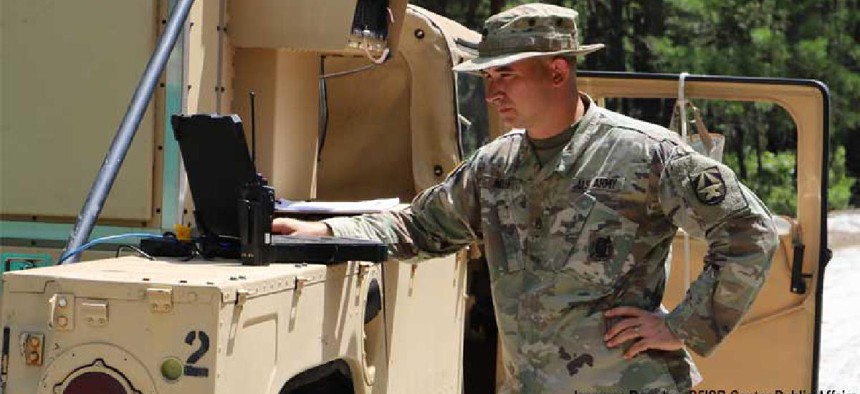Army tests automated tools for cyber defenses

The Army is experimenting with automated tools that protect artificial intelligence capabilities and reduce the number of technical personnel needed on the battlefield.
The Army is experimenting with automated tools that protect artificial intelligence capabilities and reduce the number of technical personnel needed on the battlefield.
During the 11-week Network Modernization Experiment (NetModX), the Army set out to test more than 30 fresh-out-the-lab technologies that would be available in 2023.
One of the key goals was improving automated network defenses to reduce technical personnel needs on the battlefield.
This year's experiment focused on network resiliency, bandwidth and spectrum use. A team from the Army's Command, Control, Communications, Computers, Cyber, Intelligence, Surveillance and Reconnaissance Center tested autonomous agents for defensive cyber operations. Those AI-based agents were deployed across the network to watch for potential threats and protect other AI tools on the battlefield, said Brian Lyttle, the chief of cybersecurity and information assurance division of the C5ISR Center.
"What we looked at were sending out autonomous agents across the network and watching for potential threats” to AI-based tools, Lyttle said, adding that the tools could help with the tactical manning problem of having too few network engineers on the battlefield to sift through massive numbers of security alerts.
One goal of the NetModX research is to improve the tools and their ability to determine what "network normal" is, which can improve detection and protection capabilities both on the battlefield and at the enterprise level.
NetModX also yielded some promising tech developments on the radio and spectrum front.
Daniel Duvak, the chief for the C5ISR Center's radio frequency communications division, said they tested eight different technologies on communications resiliency in hardened and non-traditional waveforms that don't rely on dedicated, licensed spectrum.
"A lot of our radio systems of today, they use a lot of spectrum," Duvak said. "Government is selling off spectrum to cell phone companies and others. And spectrum is becoming a very, very finite resource for the Army and for the joint services."
Duvak said that about four of the eight technologies would be ready for next year's Project Convergence 2021, which will focus on tech interoperability between the joint force. The remaining four need to be matured, he said.
This article was first posted to FCW, a sibling site to GCN.
NEXT STORY: National Guard steps up election support






